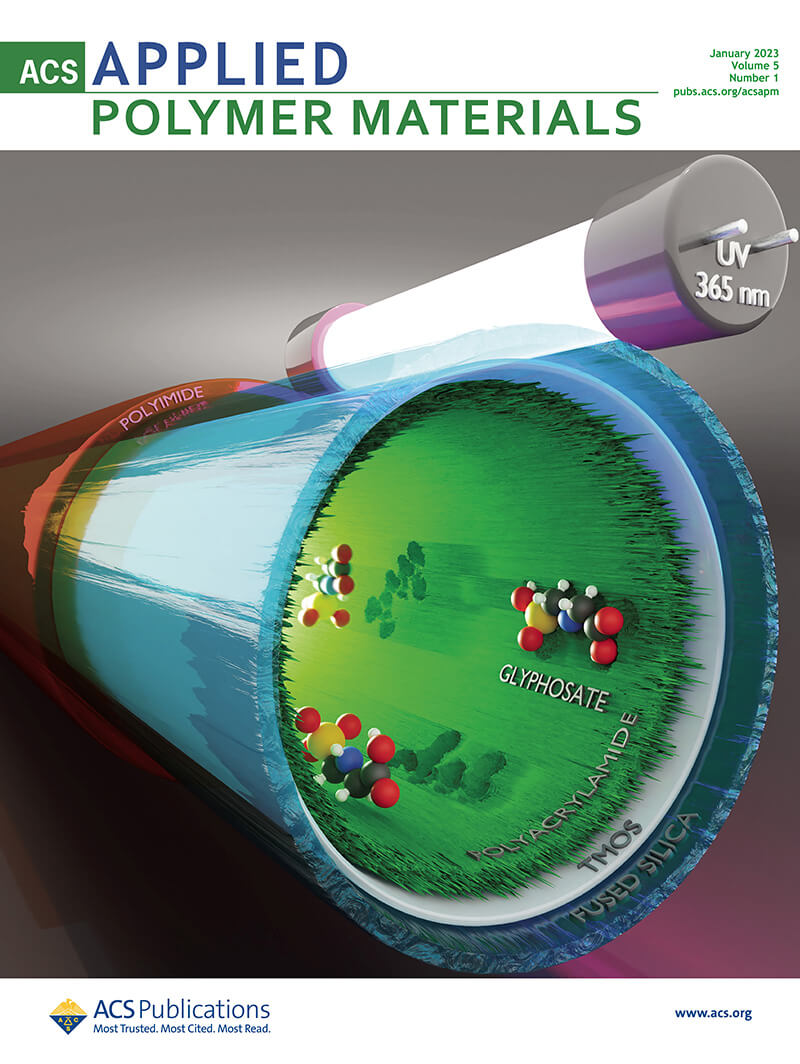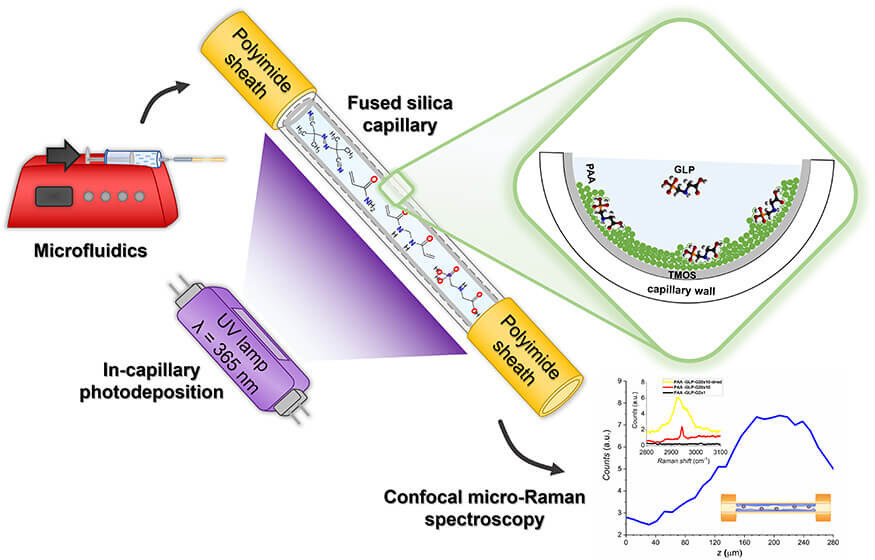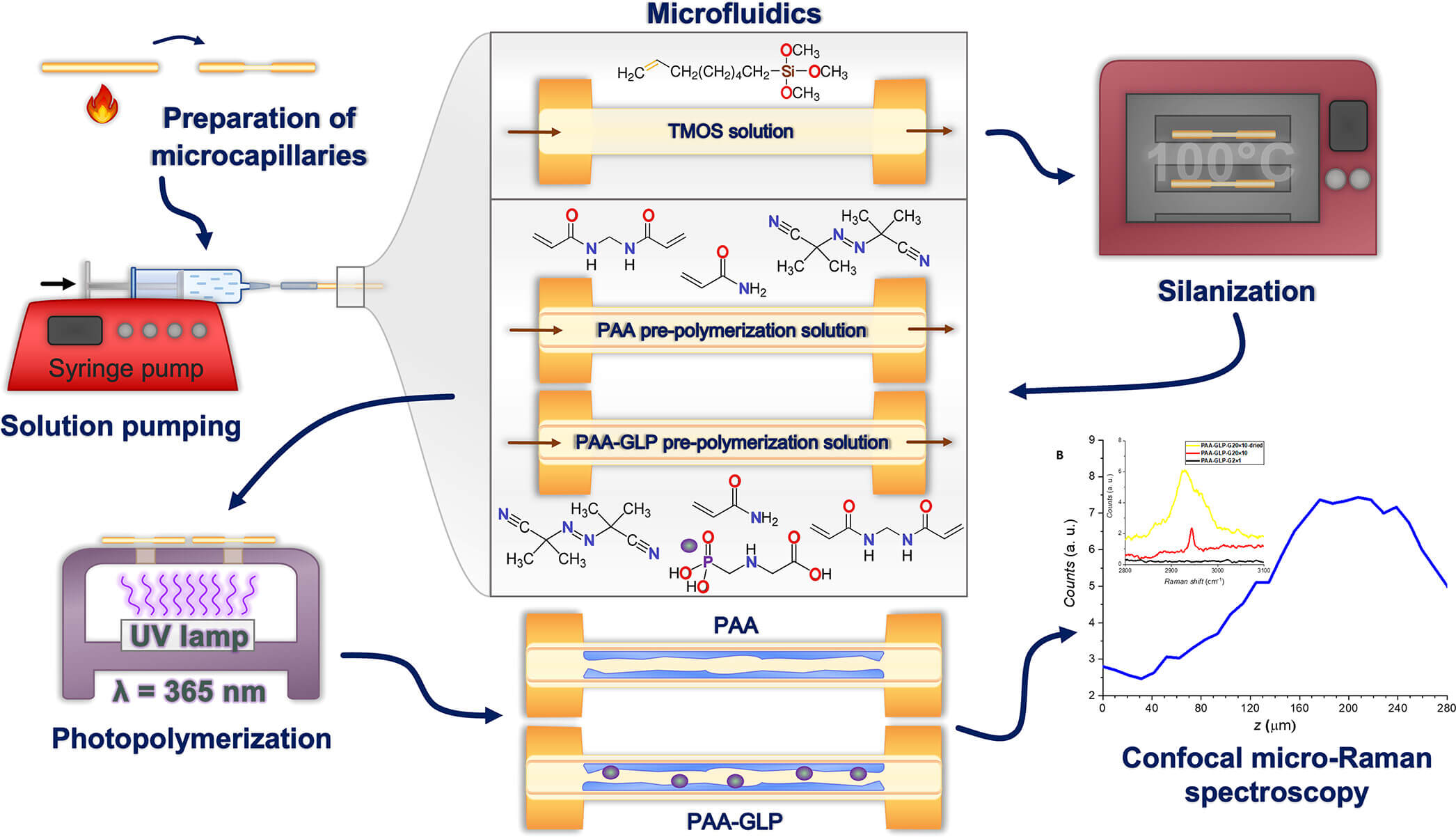I agree my information will be processed in accordance with the ENSEMBLE³ Privacy Policy.
Sign up for our newsletter
I Privacy policy |
Functional Materials Technology Group
Optical Nanocharacterization Group
Inverse Materials Design Group
Next-Generation Energy Systems Group
Biophotonic Applications Group
Solar Energy Conversion Group
Oxide Single Crystals Group
A3B5 Compound Semiconductors Group
Functional Materials Laboratory
Oxide Single Crystals Laboratory
Materials Characterization Laboratory
III-V Compound Semiconductors Laboratory
Contact
Ensemble3 sp. z o.o.
01-919 Warsaw
133 Wólczyńska St.
NIP 1182211096
KRS 0000858669
In-capillary photodeposition of glyphosate-containing polyacrylamide nanometer-thick films
Four researchers from the E3 Centre of Excellence: Katarzyna Klepacka, Piotr Piotrowski, Piotr Paszke and Dorota A. Pawlak, working in an international team with researchers from the Institute of Physical Chemistry of the Polish Academy of Sciences in Warsaw and the Institute of Applied Physics "Nello Carrara" of the National Research Council (IFAC-CNR) in Florence, conducted research on the photodeposition of chemically modified polyacrylamide nanofilms.
Microcharacterization investigations, including AFM microscopy and confocal micro-Raman in-depth scanning confirmed the effectiveness of the organic film fabrication, as well as their generation on the inner surface of microcapillaries, which will be further applied in design and development of e.g. microfluidic-based sensing microchips.
The results of the study were published in an article entitled: In-capillary photodeposition of glyphosate-containing polyacrylamide nanometer-thick films published in the journal ACS Applied Polymer Materials.
The article appeared on the cover of the journal, which can be found in the online version at the link:
https://pubs.acs.org/doi/10.1021/acsapm.2c01461
Abstract
The present research reports on in-water, site-specific photodeposition of glyphosate (GLP)-containing polyacrylamide (PAA-GLP) nanometer-thick films (nanofilms) on an inner surface of fused silica (fused quartz) microcapillaries presilanized with trimethoxy(octen-7-yl)silane (TMOS). TMOS was chosen because of the vinyl group presence in its structure, enabling its participation in the (UV light)-activated free-radical polymerization (UV-FRP) after its immobilization on a fused silica surface. The photodeposition was conducted in an aqueous (H2O/ACN; 3:1, v/v) solution, using UV-FRP (λ = 365 nm) of the acrylamide (AA) functional monomer, the N,N′-methylenebis(acrylamide) (BAA) cross-linking monomer, GLP, and the azobisisobutyronitrile (AIBN) UV-FRP initiator. Acetonitrile (ACN) was used as the porogen and the solvent to dissolve monomers and GLP. Because of the micrometric diameters of microcapillaries, the silanization and photodeposition procedures were first optimized on fused silica slides. The introduction of TMOS, as well as the formation of PAA and PAA-GLP nanofilms, was determined using atomic force microscopy (AFM), scanning electron microscopy with energy-dispersive X-ray (SEM–EDX) spectroscopy, and confocal micro-Raman spectroscopy. Particularly, AFM and SEM–EDX measurements determined nanofilms’ thickness and GLP content, respectively, whereas in-depth confocal (micro-Raman spectroscopy)-assisted imaging of PAA- and PAA-GLP-coated microcapillary inner surfaces confirmed the successful photodeposition. Moreover, we examined the GLP impact on polymer gelation by monitoring hydration in a hydrogel and a dried powder PAA-GLP. Our study demonstrated the usefulness of the in-capillary micro-Raman spectroscopy imaging and in-depth profiling of GLP-encapsulated PAA nanofilms. In the future, our simple and inexpensive procedure will enable the fabrication of polymer-based microfluidic chemosensors or adsorptive-separating devices for GLP detection, determination, and degradation.




